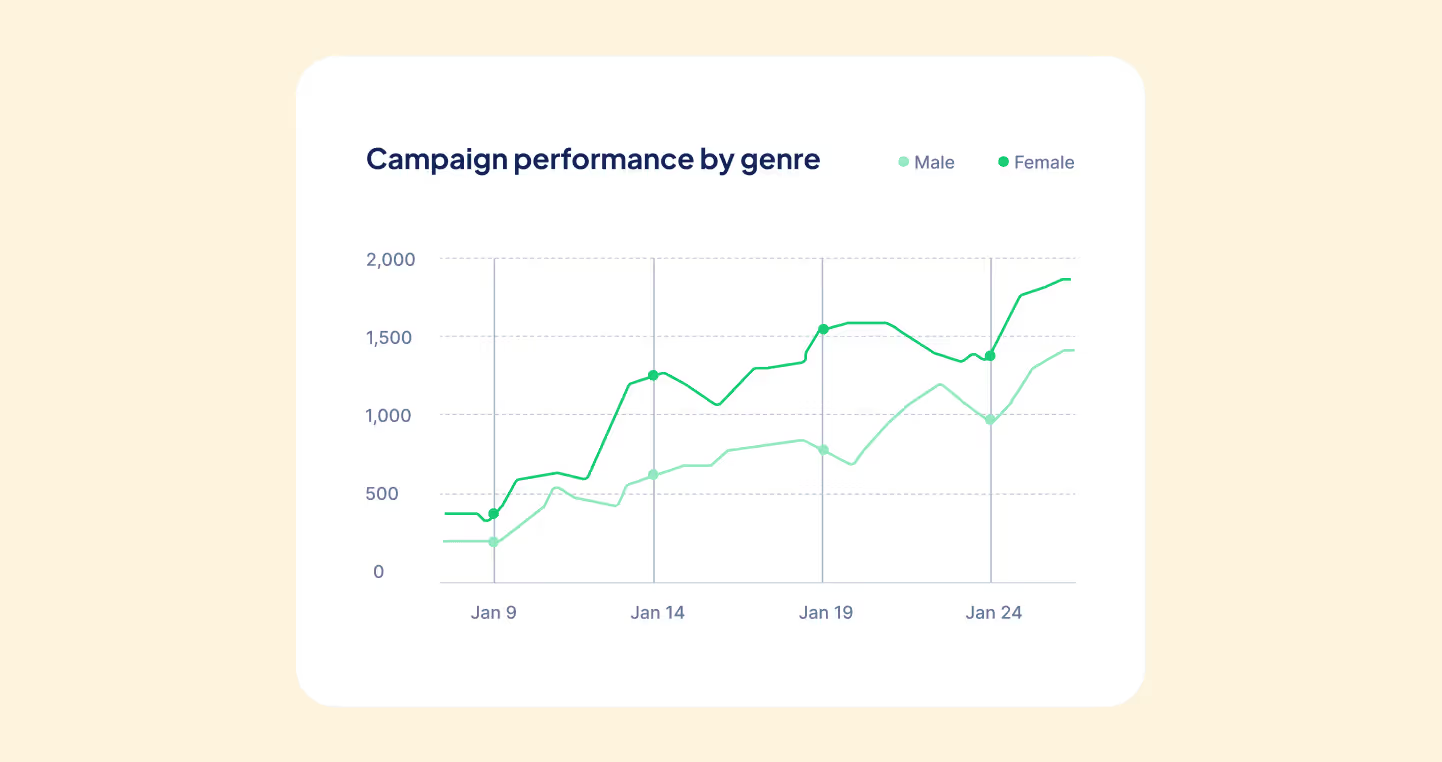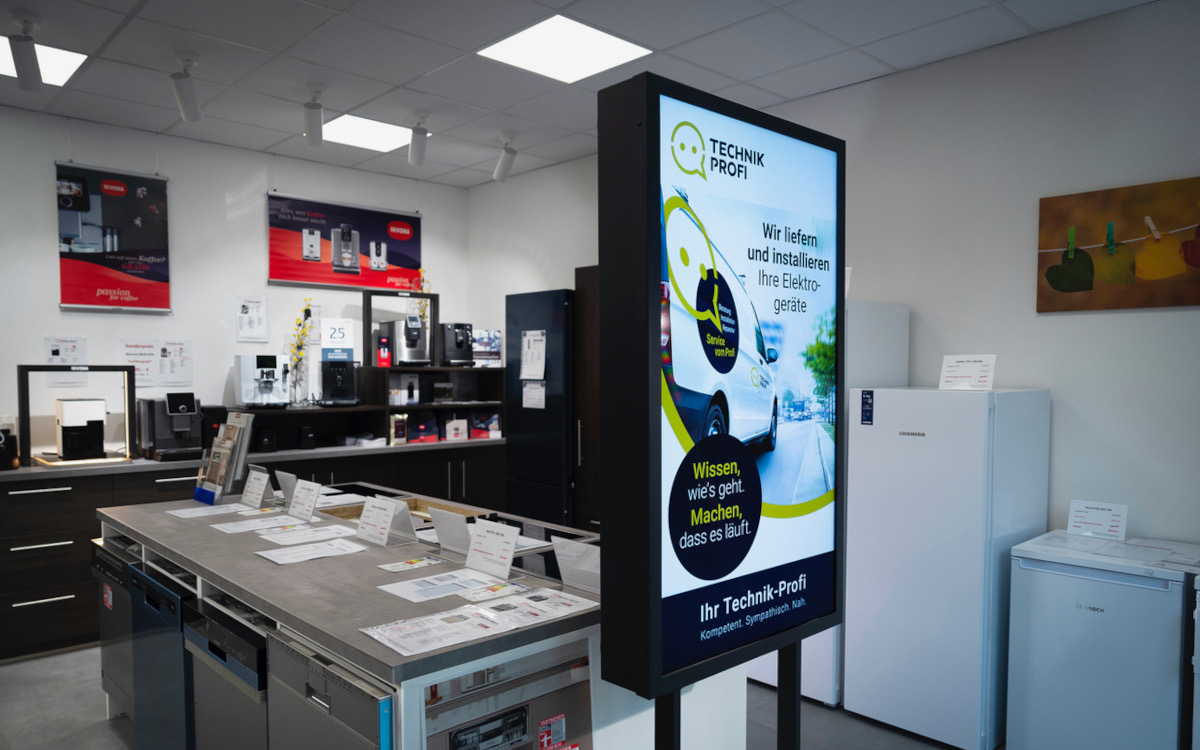initiation
In an increasingly digital world, technologies for visual communication are becoming increasingly important. Digital signage, a software solution for controlling and displaying digital content on screens, has become ubiquitous in various industries such as retail, hospitality, education, and healthcare. But how efficient is this technology really? In this article, we take a look at recent studies on the efficiency of digital signage software and analyze the benefits and challenges of this technology.
What is digital signage?
Digital signage refers to the use of digital display media to display information, advertising and other content in real time. This software enables companies to centrally control content and display it on multiple screens at the same time. The range of applications ranges from advertisements in shopping centers to interactive information displays in airports and schools.
Efficiency of digital signage in practice
1. Influence on customer behavior
One of the most frequently investigated aspects of digital signage is its impact on customer behavior, particularly in retail. Studies show that digital signage efficiently attracts customer attention and has a positive influence on buying behavior.
According to a study by Nielsen, digital signage displays in supermarkets increase brand awareness by up to 52% and lead to an average increase in sales of 31% for advertised products (Nielsen, 2021). The study also shows that customers who perceive digital signage are more likely to make impulse purchases.
2. Improve customer experience
In addition to promoting sales, digital signage also helps improve the overall customer experience. A study by the Digital Signage Federation (DSF) found that 70% of companies surveyed reported that digital signage increased customer satisfaction by providing useful information and an engaging shopping experience (DSF, 2020).
Another example is the use of digital signage in restaurants to display menus and make ordering easier. A study by QSR Magazine shows that digital menu boards reduce waiting time by an average of 15%, leading to higher customer satisfaction (QSR Magazine, 2019).
3. Education and information
Digital signage is also showing its strength in education. A study from the University of Southampton found that digital display boards on campus not only help disseminate information but also promote social engagement. Students said they were better informed about events and campus activities through digital signage (University of Southampton, 2020).
In healthcare, digital displays are often used to inform patients and visitors about waiting times, appointments, and safety measures. A study by Healthcare IT News reports that digital signage in hospitals has improved the efficiency of information distribution by up to 65% (Healthcare IT News, 2020).
Challenges and limits of digital signage
1. Technical complexity and costs
While the benefits of digital signage are obvious, there are also challenges. One of the biggest hurdles is technical complexity and the associated costs. Companies must invest in high-quality hardware and software to ensure that content is displayed smoothly and in high quality.
A study by TechRepublic shows that the implementation and maintenance of digital signage systems consumes an average of 15% of companies' IT budgets, which is a financial burden, particularly for smaller companies (TechRepublic, 2021).
2. Relevance to content
Another important point is the relevance of the content displayed. A study by McKinsey & Company highlights that the efficiency of digital signage depends heavily on how well the content is tailored to the target group. Content that is not relevant or poorly designed can even have negative effects on brand image (McKinsey & Company, 2020).
3. Privacy concerns
With the increasing use of interactive and personalized digital signage systems, data protection concerns are also growing louder. Many of these systems collect data about user behavior and preferences in order to deliver personalized advertising. A study by Pew Research shows that 67% of consumers have privacy concerns when using such technologies (Pew Research, 2021).
Future prospects of digital signage
The future of digital signage promises further innovations, in particular through the integration of artificial intelligence (AI) and augmented reality (AR). These technologies could help to further improve the personalization and interactivity of digital signage.
A recent study by Gartner predicts that around 50% of content on digital signage systems could be generated or adapted by AI by 2025, which should further increase the relevance and efficiency of this technology (Gartner, 2023).
The use of AR in digital signage could also revolutionize the way customers interact with digital content. A report from ABI Research shows that AR-powered digital signage systems could increase customer loyalty by up to 40% by providing a more immersive and interactive experience (ABI Research, 2022).
conclusion
The efficiency of digital signage software is well documented and supported by numerous studies. From increasing brand awareness and sales in retail to improving customer experience in various industries, this technology offers many benefits. However, there are also challenges, particularly in terms of costs, technical complexity, and data protection, that companies must consider.
As new technologies such as AI and AR continue to develop, the digital signage landscape will continue to change in the coming years and is likely to become even more efficient and personalized. Companies that use this technology strategically and purposefully can thus secure significant competitive advantages.
sources
•ABI Research (2022). Augmented Reality in Retail: Enhancing Customer Engagement.
•Digital Signage Federation (DSF). (2020). The Impact of Digital Signage on Customer Satisfaction.
•Gartner. (2023). AI and the Future of Digital Content Creation.
•Healthcare IT News (2020). How Digital Signage Improves Information Dissemination in Hospitals.
•McKinsey & Company. (2020). Maximizing the Effectiveness of Digital Signage.
•Nielsen (2021). The Impact of In-Store Digital Signage on Brand Awareness and Sales.
•Pew Research (2021). Consumer Concerns about Privacy in Digital Marketing.
•QSR Magazine. (2019). Digital Menu Boards: Improving Customer Experience and Sales.
•TechRepublic (2021). The Costs of Implementing Digital Signage in Businesses.
•University of Southampton (2020). The Role of Digital Signage in Enhancing Campus Communication.
Emphasize your product's unique features or benefits to differentiate it from competitors
In nec dictum adipiscing pharetra enim etiam scelerisque dolor purus ipsum egestas cursus vulputate arcu egestas ut eu sed mollis consectetur mattis pharetra curabitur et maecenas in mattis fames consectetur ipsum quis risus mauris aliquam ornare nisl purus at ipsum nulla accumsan consectetur vestibulum suspendisse aliquam condimentum scelerisque lacinia pellentesque vestibulum condimentum turpis ligula pharetra dictum sapien facilisis sapien at sagittis et cursus congue.
- Pharetra curabitur et maecenas in mattis fames consectetur ipsum quis risus.
- Justo urna nisi auctor consequat consectetur dolor lectus blandit.
- Eget egestas volutpat lacinia vestibulum vitae mattis hendrerit.
- Ornare elit odio tellus orci bibendum dictum id sem congue enim amet diam.
Incorporate statistics or specific numbers to highlight the effectiveness or popularity of your offering
Convallis pellentesque ullamcorper sapien sed tristique fermentum proin amet quam tincidunt feugiat vitae neque quisque odio ut pellentesque ac mauris eget lectus. Pretium arcu turpis lacus sapien sit at eu sapien duis magna nunc nibh nam non ut nibh ultrices ultrices elementum egestas enim nisl sed cursus pellentesque sit dignissim enim euismod sit et convallis sed pelis viverra quam at nisl sit pharetra enim nisl nec vestibulum posuere in volutpat sed blandit neque risus.

Use time-sensitive language to encourage immediate action, such as "Limited Time Offer
Feugiat vitae neque quisque odio ut pellentesque ac mauris eget lectus. Pretium arcu turpis lacus sapien sit at eu sapien duis magna nunc nibh nam non ut nibh ultrices ultrices elementum egestas enim nisl sed cursus pellentesque sit dignissim enim euismod sit et convallis sed pelis viverra quam at nisl sit pharetra enim nisl nec vestibulum posuere in volutpat sed blandit neque risus.
- Pharetra curabitur et maecenas in mattis fames consectetur ipsum quis risus.
- Justo urna nisi auctor consequat consectetur dolor lectus blandit.
- Eget egestas volutpat lacinia vestibulum vitae mattis hendrerit.
- Ornare elit odio tellus orci bibendum dictum id sem congue enim amet diam.
Address customer pain points directly by showing how your product solves their problems
Feugiat vitae neque quisque odio ut pellentesque ac mauris eget lectus. Pretium arcu turpis lacus sapien sit at eu sapien duis magna nunc nibh nam non ut nibh ultrices ultrices elementum egestas enim nisl sed cursus pellentesque sit dignissim enim euismod sit et convallis sed pelis viverra quam at nisl sit pharetra enim nisl nec vestibulum posuere in volutpat sed blandit neque risus.
Vel etiam vel amet aenean eget in habitasse nunc duis tellus sem turpis risus aliquam ac volutpat tellus eu faucibus ullamcorper.
Tailor titles to your ideal customer segment using phrases like "Designed for Busy Professionals
Sed pretium id nibh id sit felis vitae volutpat volutpat adipiscing at sodales neque lectus mi phasellus commodo at elit suspendisse ornare faucibus lectus purus viverra in nec aliquet commodo et sed sed nisi tempor mi pellentesque arcu viverra pretium duis enim vulputate dignissim etiam ultrices vitae neque urna proin nibh diam turpis augue lacus.



